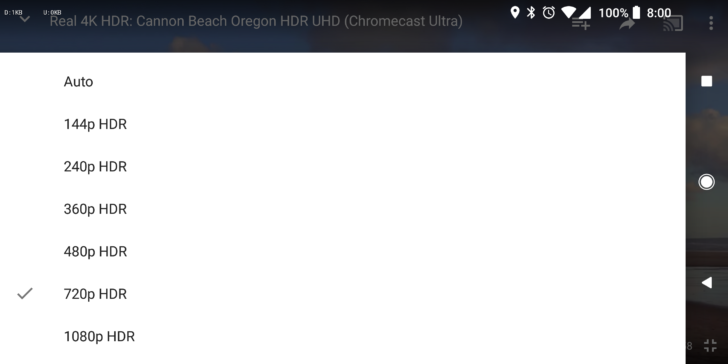HDR (High Dynamic Range) is a term we hear about when talking about taking photos, and some results produced with HDR enabled are amazing. Usually, when we talk about HDR, we are referring to the effect on the photo where image processing brings out detail in dark areas. But HDR also has another meaning when referring to video. HDR video has a much wider colour range, around 1 billion individual colours.
When we work with colours on computers, we are generally working with 8-bit colour, which means that each pixel is represented by one 8-bit byte. This is equal to 256 colours, therefore we can have 256 different shades of red, green and blue. To calculate how many colours are possible in total, we calculate 256*256*256 (combinations of each shade of red, blue, and green), which equals 16,777,216 or nearly 17 million colours. It sounds like a lot, but there is potential for more. HDR employs 10-bit colour, meaning we can have 1024 different steps per pixel per colour channel. We make the same calculation here, as there are 1024 different shades of red, green and blue. This equals a huge 1,073,741,824, or just over 1 billion possible colours. It's easy to see the benefit from a much wider colour space, allowing for greater contrast, more colours with a finer gradient of tonal differences and a nicer image.
This technology has been slowly growing for a while, coming to TVs, game consoles and now our phones. Netflix, Amazon Prime and YouTube all support this colour range, however, the YouTube application on Android has been plagued with issues. If you had a device capable of 4K, you could, in theory, watch HDR 4K videos, but it would be a painful experience. Videos above 720p suffered from frequent stuttering, leaving them basically unwatchable and in turn rendering the feature largely useless. It's interesting to note that other applications with HDR work fine, such as Netflix and Amazon Prime, but now it seems YouTube has actually decided to just remove all HDR quality options above 1080p anyway.
While it doesn't make a huge amount of sense to remove the options altogether, when other implementations from other applications worked fine, it seems Google has in fact gone ahead and taken it away. This is likely temporary, as the company might still have some kinks to work out before they arrive to a compelling solution that performs as well as consumers expect.
Via: AndroidPolice

